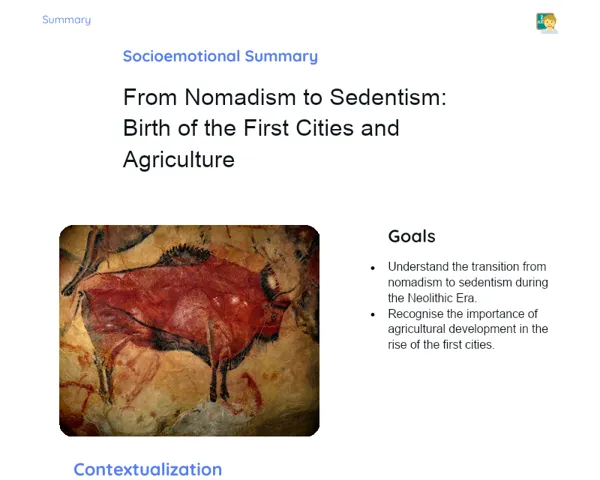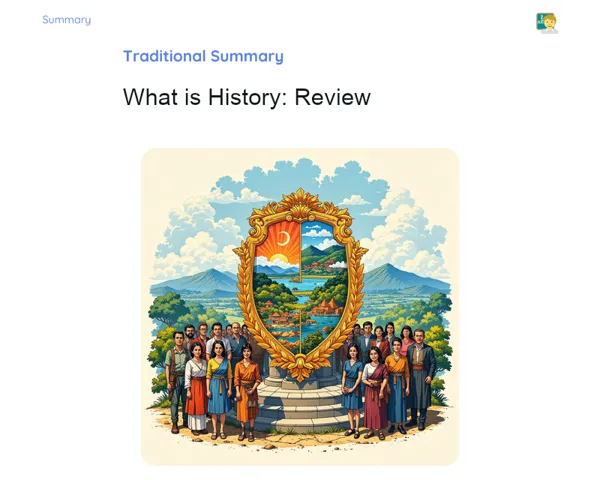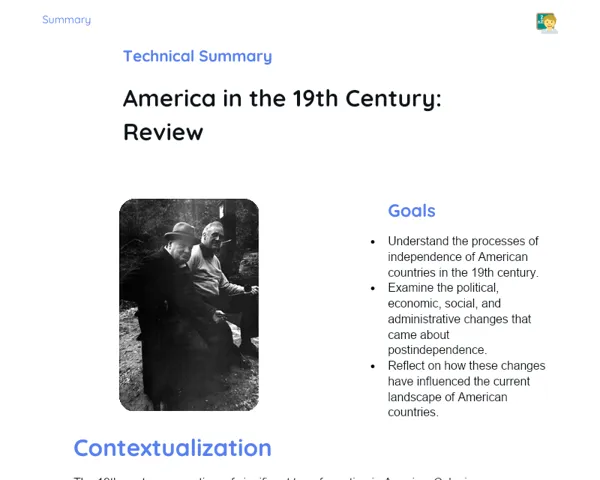Socioemotional Summary Conclusion
Goals
1. Gain insight into the key social and cultural drivers behind the Chinese Communist Revolution.
2. Recognise the features of communism in China and their effects on Chinese society.
Contextualization
🧐 Did you know that the Chinese Communist Revolution was more than just a political shift? It was a genuine social overhaul! Imagine being in a country where oppression and poverty were part of daily life, and then suddenly everything shifts toward a new vision of equality and social justice. Let’s delve into this fascinating narrative and explore how these changes impacted the lives of millions. Are you ready for this journey? 🌏
Exercising Your Knowledge
Historical Context
🌌 To grasp the Chinese Communist Revolution, it’s crucial to understand the historical backdrop. China had centuries of imperial rule, riddled with wars, foreign invasions, and stark social divides. The fall of the Qing Dynasty and the establishment of the Republic of China in 1912 looked promising, but turmoil continued with invasions and civil wars. This unstable environment set the stage for the transformative ideals proposed by the Chinese Communist Party.
-
🔹 Qing Dynasty: The final imperial dynasty in China, known for corruption, economic strife, and widespread dissatisfaction.
-
🔹 Opium War: A conflict with Western powers that resulted in humiliation and economic vulnerability for China.
-
🔹 Xinhai Revolution: The movement that dethroned the Qing dynasty and founded the Republic of China in 1912, but did not lead to the anticipated stability.
The Chinese Civil War
⚔️ The Chinese Civil War was a battle between the Nationalist Party (Kuomintang) and the Chinese Communist Party (CCP), marking a crucial power struggle. The CCP, under Mao Zedong’s leadership, innovated their strategies and cultivated a strong support base among the rural populace. The Long March, a monumental retreat spanning 12,000 kilometres, was pivotal in raising the communists' spirits and garnering new followers.
-
🔹 Nationalist Party (Kuomintang): Led by Chiang Kai-shek, they aimed to modernise China but were undermined by corruption and lack of popular backing.
-
🔹 Chinese Communist Party (CCP): Under Mao Zedong, they promised social equity and garnered support from peasants.
-
🔹 Long March: A strategic retreat by the CCP that grew into a symbol of resilience and grit, crucial for their eventual success.
Social and Cultural Impact
🌾 The Communist Revolution brought significant changes to Chinese society. Land collectivisation and the establishment of people’s communes were intended to abolish private ownership and foster equality. The Cultural Revolution, initiated by Mao, sought to refine communist ideology but led to chaos and persecution. These changes have significantly shaped the lives of millions in China and still resonate in contemporary society.
-
🔹 Land Collectivisation: Redistribution of land intended to address inequality and empower peasants.
-
🔹 People's Communes: Initiatives designed to streamline production and community life, aiming to erase class distinctions.
-
🔹 Cultural Revolution: An initiative to strengthen communist ideology, which ultimately resulted in widespread persecution and suffering.
Key Terms
-
Qing Dynasty
-
Opium War
-
Xinhai Revolution
-
Nationalist Party (Kuomintang)
-
Chinese Communist Party (CCP)
-
Long March
-
Land Collectivisation
-
People's Communes
-
Cultural Revolution
For Reflection
-
🧐 Empathy and History: How can we utilise our understanding of human motivations during the Communist Revolution to reflect on today’s social justice movements?
-
🤔 Resilience and Perseverance: The Long March exemplifies remarkable overcoming. How can the history of the Chinese communists motivate our own resilience?
-
🌍 Social and Personal Changes: What are the significant societal shifts initiated by the Chinese Communist Revolution? How can we use these insights to foster positive changes in our community?
Important Conclusions
-
✨ The Chinese Communist Revolution was a watershed moment that deeply transformed Chinese society. Its roots lie in the struggle against oppression and poverty, and understanding these motivations is key to grasping its effects.
-
🇨🇳 From the Qing dynasty to the founding of the People's Republic of China, the revolution was fuelled by a pursuit of social justice and equality. The leadership of Mao Zedong and the implementation of agrarian reforms were vital components of this transformative process.
-
📚 Examining this period encourages us to think critically about social changes and fosters empathy for the challenges faced by various social groups, aiding in the development of deeper social awareness.
Impacts on Society
🌟 The Chinese Communist Revolution continues to be a significant point of reference in contemporary society, influencing politics, the economy, and culture in modern China. Land collectivisation and agrarian reforms drastically changed the rural landscape, impacting countless lives. Understanding these shifts allows students to draw parallels with current social movements and view the quest for equality and justice from a fresh perspective.
❤️ Furthermore, the history of this revolution imparts valuable lessons about resilience and determination. The Long March serves as a beacon of inspiration, urging students to confront their personal and academic challenges with courage. Engaging emotionally with these narratives can bolster students' empathy and their ability to overcome daily obstacles.
Dealing with Emotions
🧘♂️ To tackle emotions while studying the Chinese Communist Revolution, I suggest an exercise based on the RULER method. As you engage with the materials, acknowledge the emotions invoked by the struggles and triumphs faced by those involved. Reflect on why you feel this way and how these emotions shape your understanding of historical events. Identify these feelings—such as sadness for oppression or respect for resilience. Express these emotions in a brief written piece or by discussing them with a peer. Finally, incorporate regular practices to address these emotions, such as mindfulness techniques or intentional breaks during study sessions.
Study Tips
-
📝 Take Detailed Notes: While studying, jot down key ideas and concepts in your own words. This reinforces the material and aids in reviewing later.
-
🎥 Use Multimedia Resources: Explore documentaries, podcasts, and videos related to the Chinese Communist Revolution. Various formats can enhance engagement and learning.
-
🗣️ Debate with Peers: Form study groups to discuss the topic. Engaging in debates around differing perspectives can deepen understanding and develop critical thinking skills.



